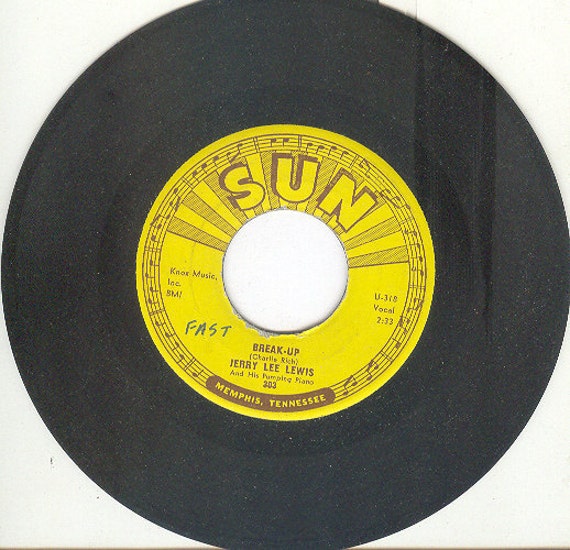
The first common speed emerged as 78rpm in the early 1900s when electrically-powered turntable motors came into being. The crudeness of the hand crank mechanism on early turntables meant that setting a record speed standard proved difficult. Image courtesy of PMC (opens in new tab)įirst things first, the all-important speed.
#When did 33 rpm records come out how to
How to add a turntable to your existing music systemĪ 1955 Collaro record player.In the mid-’60s, Acoustic Research’s The AR Turntable (pictured, above), which pioneered the three-point suspension turntable design, was among the most popular in the first wave of belt-drive models. The belt absorbed vibrations, thus helping to isolate motor noise from the platter. The belt-drive turntable was a much more efficient, simple and cost-effective method, with a motor off to the side driving a rubber belt that wrapped around the outside of the platter to turn it. As the wheel was coupled to the motor, vibration from it could impact the record’s sound, and the single-record-playing turntable that emerged didn’t require such a high-torque system. For the turntable to spin at the correct speed under the weight of a handful of records, torque was important, and thus the idler wheel drive – a rubber wheel that ran off the motor and sat underneath the platter, acting to isolate motor vibrations from impacting the platter and, therefore, the music playback – was the ideal drive system.īut the idler wheel method had its disadvantages. Records would be stacked on a spindle on top of each other, and when one finished the player would automatically spin the next record. The first stereo turntables were record changers that could play several records in a row. Turntables on the shelf today will mostly be belt-drive and, less typically, direct-drive systems, but the first record players sported what's called idler wheel designs. Image via Vinyl Engine (opens in new tab) The rating reflects sound quality, so a mint album will sound and look nearly the same as when it was new.Acoustic Research’s The AR Turntable. Vinyl albums are rated as follows: Mint, Very good plus, Very good, Good plus, Good, Fair, and Poor.

Since records in the 45 format are rarely produced, it's an additional reason for being collectible. The commercial "That's All Right" single by Sun Records for the then-unknown Elvis Presley is a highly sought-after 45 vinyl. Earlier examples of a specific genre can be rare and appreciated as a historical artifact. Some musical acts remain admired and in demand.Īmong music aficionados, albums with a cultural context may be valuable. Like fashion, past musical stylings such as disco can become admired long after they hit their peak. For example, Tommy Johnson's blues '78 record called "Alcohol and Jake Blues" is a collectible item because only three copies are known to exist. Vinyl records are considered rare if only a limited number were ever made or contain unique material. These factors are rarity, demand, and history. Several factors determine if an album is collectible. Store vinyls in a dry place at room temperature. Use polyethylene sleeves to protect the album cover and disc. Do not store them horizontally one of top of the other. Stack albums vertically or upright on their edges. Brush a carbon fiber or a soft microfiber cloth over the playing area. Records should be cleaned before and after they are played. Use two hands when placing a record on the turntable. Hold a record by placing your thumb on the record's edge and place the rest of your fingers upon the center label. The dark areas of the record contains the audio tracks. How are vinyl music records cleaned and preserved?

Attach powered speakers to the player, place your record on the turntable, and position the needle at the outer edge of the album. A record player has a turntable and a stylus with a needle on one end. The vinyl collectible market remains healthy. Vinyl albums continue to be issued by some artists. They were the preferred sound source until compact discs became more prevalent. The record format was commercially available in the 1920s. Some albums are renowned for their included album art. A vinyl record is a music disc with spiral grooves from the edge to the center and stores analog sound.


 0 kommentar(er)
0 kommentar(er)
